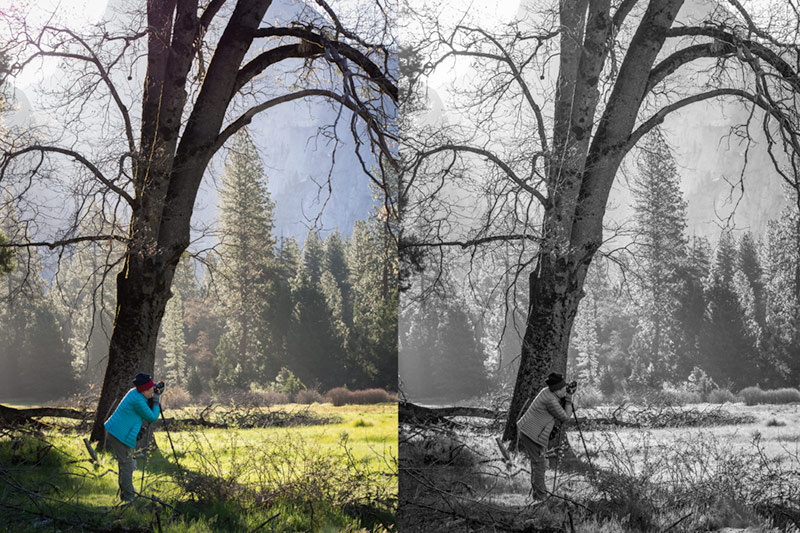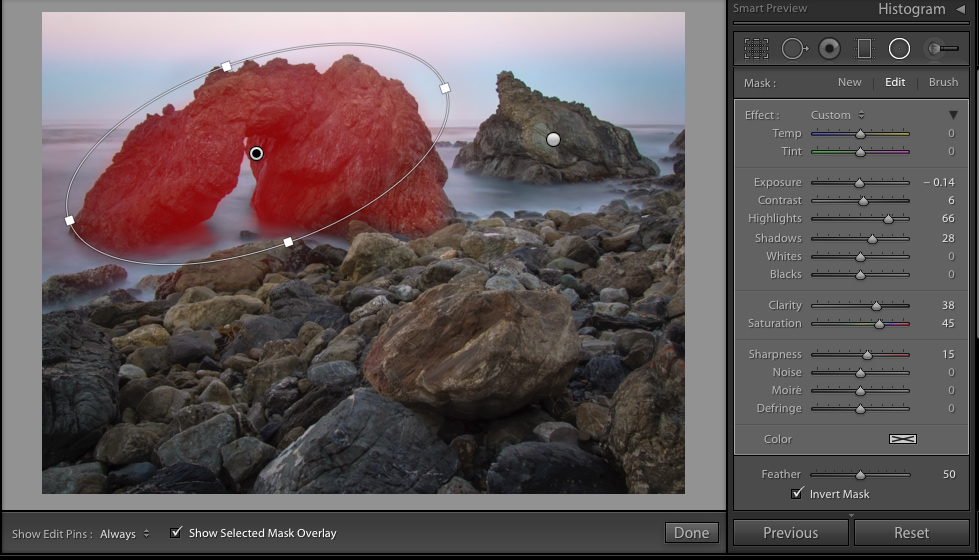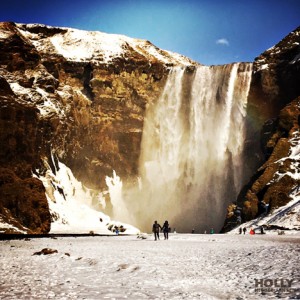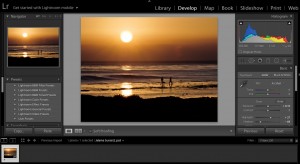
Did you get a shiny new camera for Christmas and you are spending a lot of time learning the camera? Maybe you are getting up early to shoot at just the right location, in just the right light thinking you are going to be the next Ansel Adams. How is that working for you?
Do you realize learning effective photo processing is easily half of the secret to creating amazing images? I do the bulk of my photo editing and organizing in Adobe Photoshop Lightroom. Lightroom is an amazing program that offers you state of the art adjustments to push your photography from good to great.
Your great new advanced digital camera has come a long way to helping you create properly exposed and sharp images, but if you don’t learn some simple photo editing techniques, you will be not be getting the maximum out of your camera.

What makes Lightroom so great?
Maybe you have collected a large body of photographic work. Do you know where all your pictures are, and can you find them easily? When you first import your images into Lightroom, you can create a series of tags and star ratings that will help you find your favorite images in a matter of seconds. I have over 40,000 images in my Lightroom catalog, all easily accessible in moments.
Why do I need photo editing programs to create a finished image?
When you shoot an image in JPG, it comes out of your camera as a retouched digital file. How can that be? Well, the camera has made the adjustments for you. It has made the decisions on saturation, sharpness, and color, all without your input.
Wouldn’t you rather be making the creative decisions yourself when it comes to post-processing?
Yes, it takes some effort to learn Photoshop or Lightroom, but these programs are so powerful, once you get the basic tools, you won’t want to go back. These are skills that you can use for a lifetime of photo taking and processing.
When you shoot with a RAW file, you can non-destructively change the white balance, color contrast, and saturation to your liking. (Non-destructive adjustments don’t harm the file or degrade the image in any way.) If you decide to change these settings with a JPG file in post-processing, with every adjustment, you are affecting the quality of the image and are losing resolution. At the very least, work with a TIFF file, where the image adjustment is lossless.
If you have pre-visualized your picture when you take it, you will have a good idea of where you would like to go with this picture in post-processing later on.

Why doesn’t the camera catch what I see?
A digital camera can only read a certain range of light and gamut of color. The human eye can see a lot more than a camera can. By using post processing, you are allowing the image to reflect exactly what you saw at the scene, or what you visualized when you took the picture. The trick here is to not over saturate, over sharpen, or generally overdo the editing process so it looks fake or cartoonish. But if that is your creative vision, then go for it.
How do I get there? Practice, practice, practice.
Take a good beginning post-processing class like my Lightroom Quick Start class here at BPSOP. This is the clearly the other half of creating amazing images. Once you have learned the workings of your digital camera, it is now time to learn how to effectively edit in a program like Adobe Photoshop Lightroom.
BPSOP Instructor – Holly Higbee-Jansen
 Holly Higbee-Jansen is photographer, trainer, blogger, and workshop leader who enjoys teaching and the creative process. Her passions include teaching photography workshops in beautiful locations in California, Iceland, Costa Rica and the American West with her husband Mark. Holly also teaches online classes on Lightroom, Photoshop and photographic technique. Get Holly’s Free E-Book on “Landscape Photography and the Light“ and find out about her newest workshops at Jansen Photo Expeditions.com.
Holly Higbee-Jansen is photographer, trainer, blogger, and workshop leader who enjoys teaching and the creative process. Her passions include teaching photography workshops in beautiful locations in California, Iceland, Costa Rica and the American West with her husband Mark. Holly also teaches online classes on Lightroom, Photoshop and photographic technique. Get Holly’s Free E-Book on “Landscape Photography and the Light“ and find out about her newest workshops at Jansen Photo Expeditions.com.
Reach Holly by email at [email protected] and read her blog at JansenPhotoExpeditions.com/Blog
Holly Teaches:
iPhone Photography

In this class, we will introduce you to the magic of iPhone photography using several shooting and editing apps that will give you the ability to make your pictures sing in a fun and easy way.You will learn how to crop, change saturation, brightness and affect the overall look of your pictures with HDR, drama and grunge filters and other techniques. You will be amazed at the simple and effective methods.
Do you want to learn to create images that show the beauty of the scene you saw when you took the photograph? Do you want to learn the other essential side of digital photography, photo editing and get up to speed quickly?
This course is designed to get you up and running FAST in this incredibly powerful program. In this two week information packed class, you will learn how to import, organize and perform simple and effective editing processes that will let you produce beautiful adjustments to your pictures.
For a complete list of Holly’s current workshops go to:
Jansen Photo Expeditions – JansenPhotoExpeditions.com
Holly’s Blog: http://jansenphotoexpeditions.com/blog
Facebook – https://www.facebook.com/Jansenphotoexpeditions
Instagram – http://instagram.com/photographyexplorations
YouTube – youtube.com/c/Jansenphotoexpeditions
500px – https://500px.com/hhjphoto











